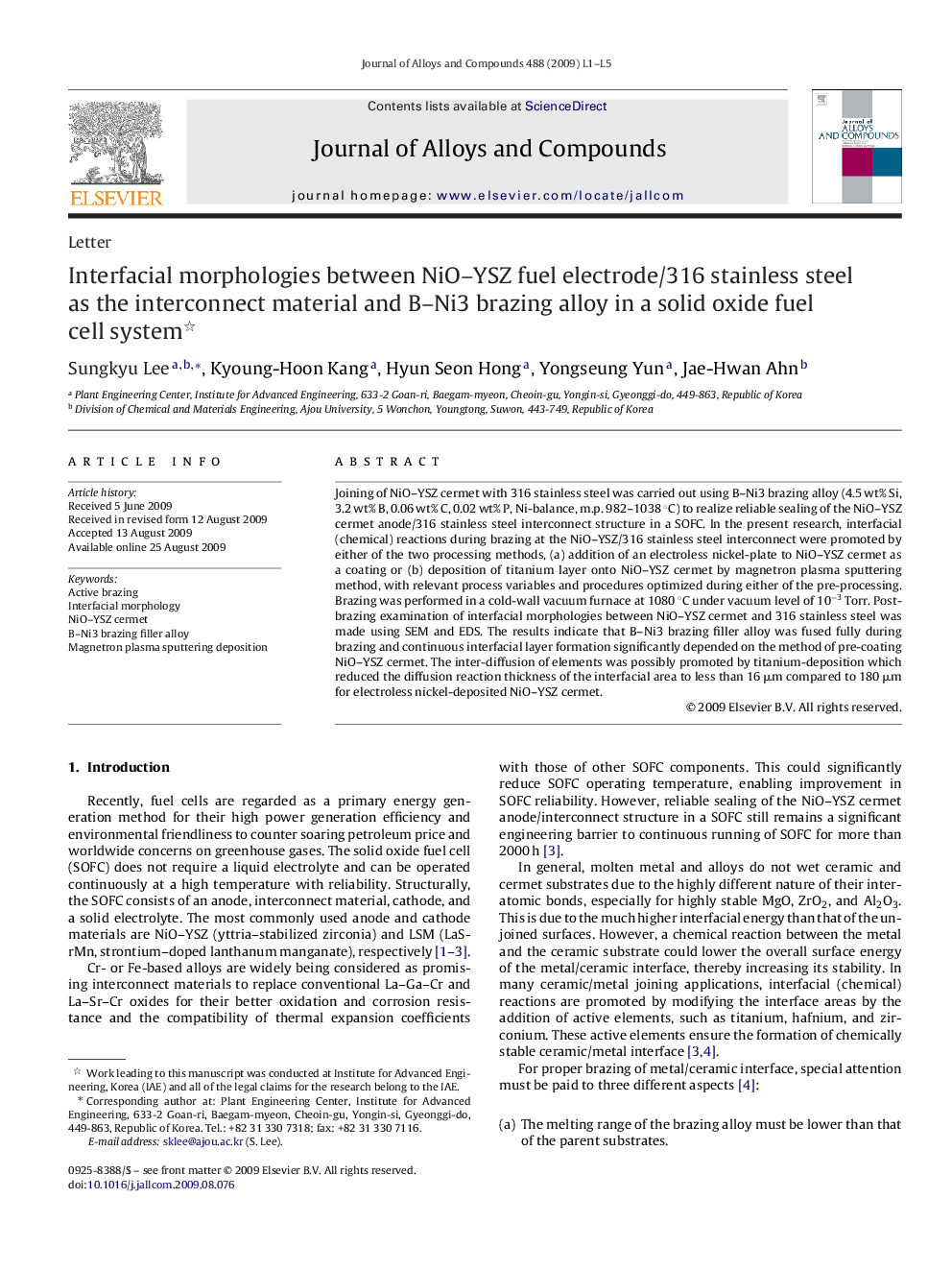| Article ID | Journal | Published Year | Pages | File Type |
|---|---|---|---|---|
| 1621359 | Journal of Alloys and Compounds | 2009 | 5 Pages |
Abstract
Joining of NiO-YSZ cermet with 316 stainless steel was carried out using B-Ni3 brazing alloy (4.5 wt% Si, 3.2 wt% B, 0.06 wt% C, 0.02 wt% P, Ni-balance, m.p. 982-1038 °C) to realize reliable sealing of the NiO-YSZ cermet anode/316 stainless steel interconnect structure in a SOFC. In the present research, interfacial (chemical) reactions during brazing at the NiO-YSZ/316 stainless steel interconnect were promoted by either of the two processing methods, (a) addition of an electroless nickel-plate to NiO-YSZ cermet as a coating or (b) deposition of titanium layer onto NiO-YSZ cermet by magnetron plasma sputtering method, with relevant process variables and procedures optimized during either of the pre-processing. Brazing was performed in a cold-wall vacuum furnace at 1080 °C under vacuum level of 10â3 Torr. Post-brazing examination of interfacial morphologies between NiO-YSZ cermet and 316 stainless steel was made using SEM and EDS. The results indicate that B-Ni3 brazing filler alloy was fused fully during brazing and continuous interfacial layer formation significantly depended on the method of pre-coating NiO-YSZ cermet. The inter-diffusion of elements was possibly promoted by titanium-deposition which reduced the diffusion reaction thickness of the interfacial area to less than 16 μm compared to 180 μm for electroless nickel-deposited NiO-YSZ cermet.
Keywords
Related Topics
Physical Sciences and Engineering
Materials Science
Metals and Alloys
Authors
Sungkyu Lee, Kyoung-Hoon Kang, Hyun Seon Hong, Yongseung Yun, Jae-Hwan Ahn,
